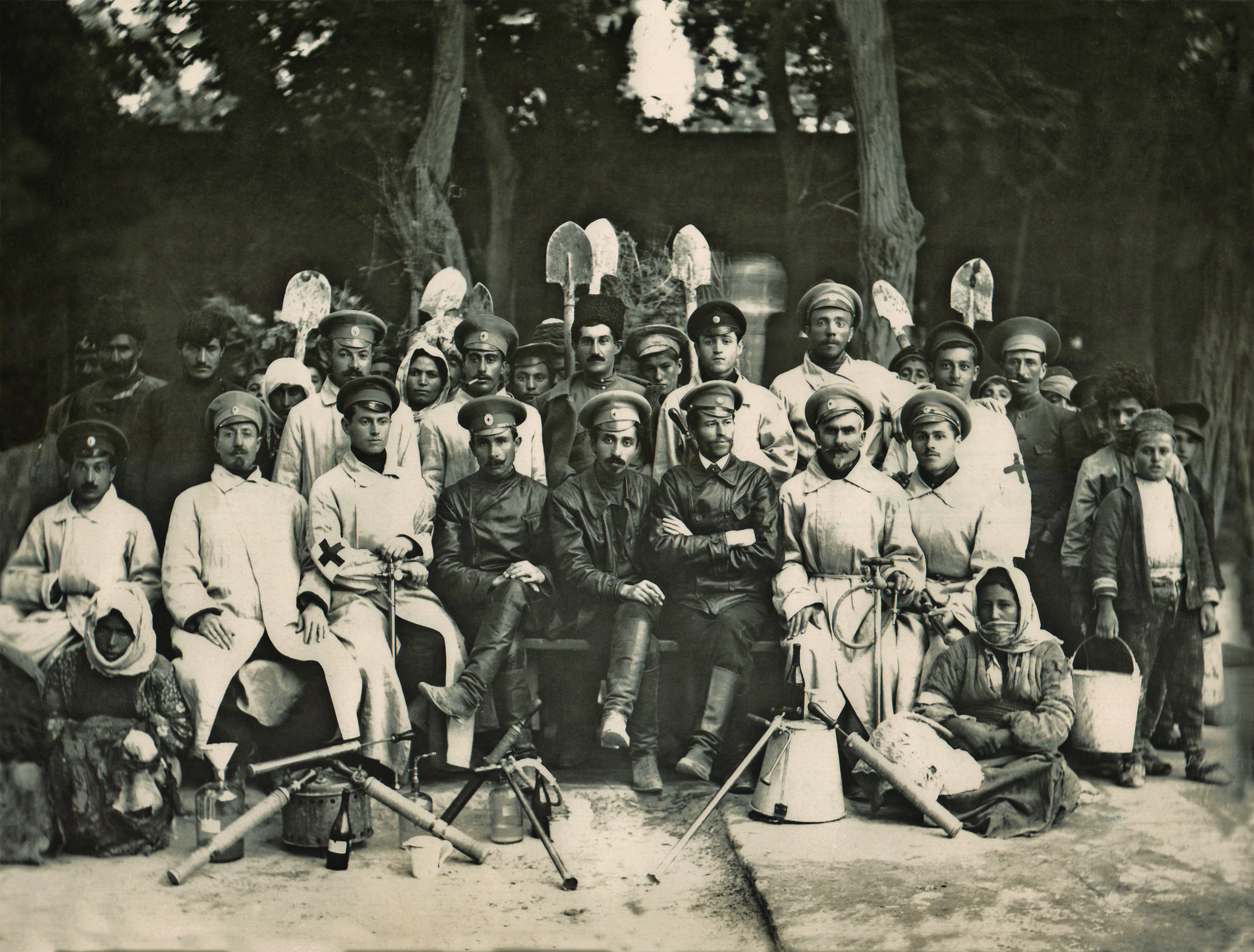14.06.2016

In summer 1915 epidemic disease of typhus began to spread in Etchmiadzin as a result of unsanitary conditions. Quarantine was announced. The shortage of food and water, lack of medical care and the scorching sun contributed to the rapid spread of the epidemic. The authorities select a few armed battalions whose purpose was to assemble dead bodies and bury them. The photo is of a group of sanitation gravediggers.
In late 1914 and early 1915, around 50 thousand Armenians from Western Armenia, Persia, and the surrounding districts were moved Eerivan and Tbilisi provinces. In the years of First World War a committee was created aiming to organize aid for the refugees.
Tsarist government issued draft laws and established a special authorized office for the replacement of the refugees, but it failed to cover all the needs of refugees.
In August 1915 Armenians coming mostly from Van, Bitlis, Mush and Khnus to Eastern Armenia found shelter in the forest of Etchmiadzin, in the areas located between Lake of Ayghr and village of Khatunargh.
“Instead of providing medicalaid the local authorities had provided special carts, which were moving by the forest gathering the dead bodies and burying them somewhere. No one knew where they are taking them, as there was no need to know…”
Sahag Garabedian
Survivor of Armenian Genocide
AGMI collection, section 8, folder 167, No. 268, unpublished memories, p. 137.
Photo: Collection of Yerevan History Museum





